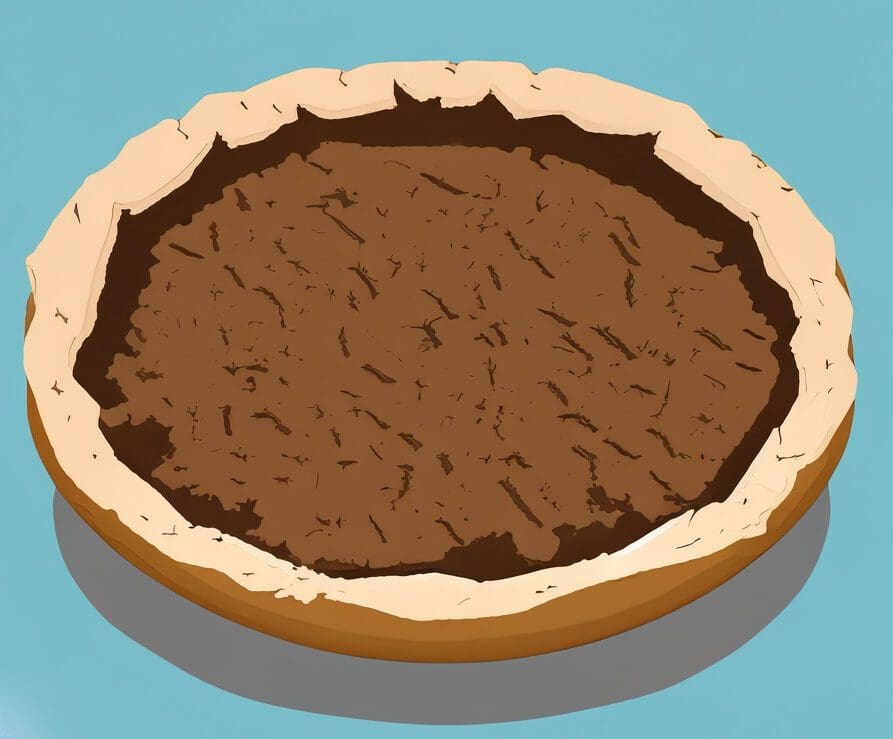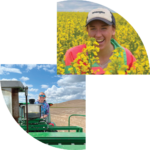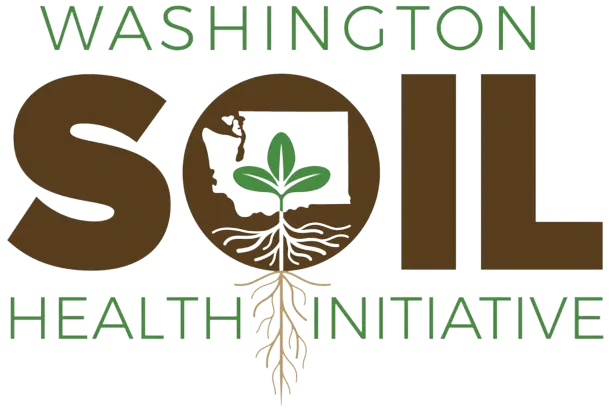
A Slice of the Soil Organic Matter Pie
Soil organic matter can be better understood by measuring individual components or “slices” of the soil, which can provide quicker and more detailed insights into soil health than just assessing the total amount
June 14, 2023
Authors: Katherine Smith & Rachel Breslauer
Just like your favorite holiday pie, soil organic matter has a number of different slices that make it come together just right. Maybe each slice isn’t the same size, but without each piece, the pie just wouldn’t be complete. We can use this pie example to understand the different ways we can look at soil organic matter, either as a whole pie or as individual slices. You’ll either be hungry or sick of pie by the end of this.

We can think of soil organic matter like tasty holiday pie
The most common method used to understand organic matter in soil is to measure the size of the whole pie. This measure is called total soil organic matter and is commonly found on a regular soil test. While it is useful to know how big our pie is, it can take a long time, even years, for us to detect any changes in size.
Or you can measure slice by slice, by measuring the different components that make up soil organic matter as a whole. We may see changes long before we can see the whole pie changing. It can be helpful to look at the slices, instead of the whole pie, for two reasons.
First, we can detect changes in the size of the whole soil organic matter pie much faster. This can help us understand if the soil is responding positively or negatively to soil management changes you might be making on-farm.
Second, we can sometimes see individual slices changing together and understand how the composition of the pie itself might be changing.
Which Tests Make the Cut?
So, in terms of soil organic matter, “What makes a good soil health indicator?” As Dr. Steve Culman explains in a recent WaSHI blog post, a quality soil health indicator must be many things, including being sensitive to management and representative of soil function. That is where those individual pie slices come in. Some of the slices can show change much more rapidly than the whole pie or even other slices. However, that’s not all it takes to make the cut.
A good soil health indicator is also going to be affordable and suitable for commercial labs. This is important for continued access to pie… Ah, I mean soil health testing services.
When compiling the WSU Extension fact sheet, “A practical guide to soil health indicators for monitoring shifts in soil organic matter,” we used the criteria Dr. Culman outlined for assessing various indicators. We looked around to see how many indicators were available that measured slices of the soil organic matter pie. Then, we researched those indicators and assessed them based on cost and accessibility in the Pacific Northwest.
Chances are, you already have a good idea of how big your soil organic matter pie is in your different fields. You probably get that data from your regular soil tests. However, if you want to see how your pie is changing, you’ll probably want to zoom into some individual slices.
Realistically, a few factors will play into the slice(s) you choose to measure.
First, it makes sense to identify a test that measures something that is important to you and your goals on your farm. Are you most interested in soil organic matter to supply nutrients? Or improve soil structure? Or increase biological activity?
Based on your interests, some slices may be more interesting than others. In this fact sheet, we outline the relationship between each commercially-available indicator and soil functions. These functions are summarized in Figure 1.

Figure 1. Indicators that measure soil organic matter are linked to different soil functions.
Now, this is the point where we admit that the pie analogy is not perfect. Each indicator we outline in the fact sheet is related to different slices of the soil organic matter pie. These indicators do not, however, represent independent fractions of the pie. The parts of the pie they measure can overlap a lot!
Second, the reality of soil health testing is that some tests are much cheaper and more readily available than others. How useful is a test that you can’t find or afford to use regularly? In this fact sheet, we give a rough idea of how expensive and accessible each of the commercially available tests is. The cost and accessibility of each test is summarized in Figure 2.

Figure 2. Indicators used to measure soil organic matter differ in availability and cost.
So, if understanding how to measure your soil organic matter pie is what you are after, and you’re tired of hearing us talk about pie, you can dive a little deeper with the fact sheet, “A practical guide to soil health indicators for monitoring shifts in soil organic matter.”
No pie there, we promise. And while you’re at it, you can learn more about all of the soil organic matter slices we’ve been talking about in another WSU Extension publication, “Understanding and Measuring Organic Matter in Soil.”
Further reading:
A Practical Guide to Soil Health Indicators for Monitoring Shifts in Soil Organic Matter

Katherine Smith & Rachel Breslauer
Both Katherine and Rachel are PhD Candidates at Washington State University. Katherine's current research focuses on assessing the impact of alternative cropping systems on soil health, crop yield and quality, and economic sustainability. Rachel's research focuses on understanding processes affecting seed nutritional value including: timing of soil nutrient supply, nutrient uptake synergisms and antagonisms, and root system plasticity. More broadly, she aims to continue work developing agronomic practices for quinoa production in the Pacific Northwest.
This article was published by the Washington Soil Health Initiative. For more information, visit wasoilhealth.org. To have these posts delivered straight to your inbox, subscribe to the WaSHI newsletter. To find a soil science technical service provider, visit the Washington State University Extension website or the Washington State Conservation District website.

